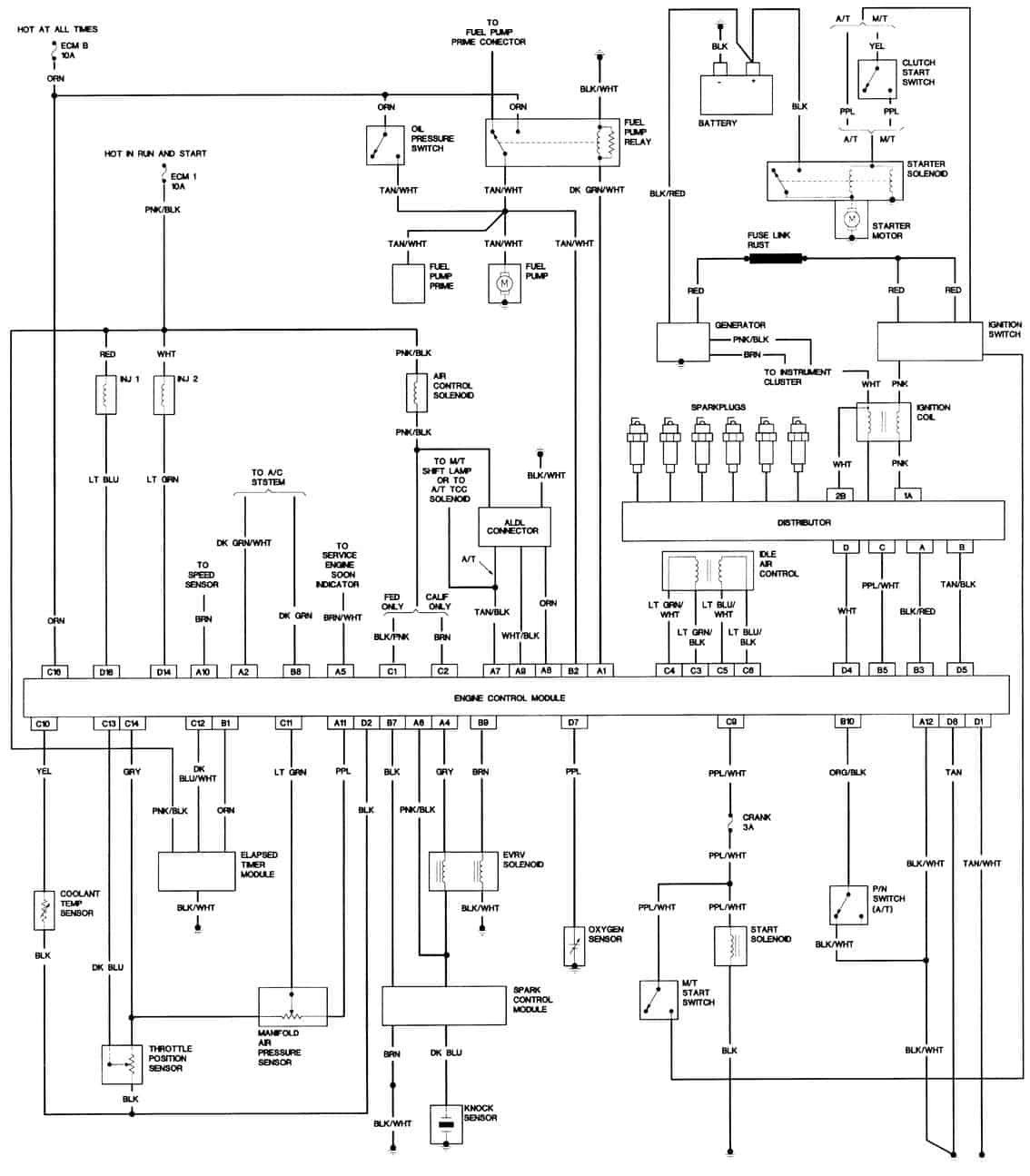 I have a 1988 Chevy s-10 v6 2.8l 4×4 ext cab with 120,000 miles on it and no spark. Great truck, daily driver never had a problem with it. I went to the store, came out and it would not start. It cranked like crazy but would not start. I had it towed home. I got up early took the battery post off and put them back on and the truck fired right up with no problem. It cranked a little longer but it fired up. I cut it off, came back out and it would not fire. So I took a spark plug wire off and noticed it was not getting any fire from the plug wires. So I took the ignition module off and took it to Oreilys and they tested it. They said it was bad so replaced the ignition module and still no fire. Then I replaced ignition coil still no spark. I can hear the fuel pump kicking on but I don’t see gas spraying out of the injectors when I crank the engine. I have not tested for fuel pressure. The only other thing I can think of is it being the distributor cap not getting good fire to the plug wires. Any advice will be helpful thanks.
I have a 1988 Chevy s-10 v6 2.8l 4×4 ext cab with 120,000 miles on it and no spark. Great truck, daily driver never had a problem with it. I went to the store, came out and it would not start. It cranked like crazy but would not start. I had it towed home. I got up early took the battery post off and put them back on and the truck fired right up with no problem. It cranked a little longer but it fired up. I cut it off, came back out and it would not fire. So I took a spark plug wire off and noticed it was not getting any fire from the plug wires. So I took the ignition module off and took it to Oreilys and they tested it. They said it was bad so replaced the ignition module and still no fire. Then I replaced ignition coil still no spark. I can hear the fuel pump kicking on but I don’t see gas spraying out of the injectors when I crank the engine. I have not tested for fuel pressure. The only other thing I can think of is it being the distributor cap not getting good fire to the plug wires. Any advice will be helpful thanks.
RESPONSE
First thing to check would be the 10 amp ECM 1 Fuse. This fuse when blown would keep the PCM from allowing injector pulse and distributor spark. The 10 amp ECM B fuse if blown would not allow fuel pump operation. If the fuses check out OK then you are left with the Pick up coil in the distributor that signals the ECM and then the ECM itself. Of cousre this is assuming the wiring harness is also GOOD. All of which could cause a no spark situation.

The heart of the electronic control system which is found on most vehicles covered by this manual is a computer control module. The module gathers information from various sensors, then controls fuel supply and engine emission systems. Most vehicles are equipped with an Engine Control Module (ECM) which, as its name implies, controls the engine and related emissions systems. Some ECMs may also control the Torque Converter Clutch (TCC) on automatic transmission vehicles or the manual upshift light on manual transmission vehicles. Later model vehicles may be equipped with a Powertrain Control Module (PCM) or a Vehicle Control Module (VCM). Both of these are similar to the original ECMs, but are designed to control additional systems as well. The PCM may control the manual transmission shift lamp or the shift functions of the electronically controlled automatic transmission. The VCM is used to control the manual shift lamp and electronic brake control functions.
Regardless of the name, all computer control modules are serviced in a similar manner. Care must be taken when handling these expensive components in order to protect them from damage. Carefully follow all instructions included with the replacement part. Avoid touching pins or connectors to prevent damage from static electricity.
All of these computer control modules contain a Programmable Read Only Memory chip or CALPAK that contains calibration information which is particular to the vehicle application. This chip is not supplied with a replacement module and must be transferred to the new module before installation. Late model vehicles equipped with a VCM utilize both a PROM chip and an Electronically Erasable Programmable Read Only Memory (EEPROM) which must be reprogrammed after installation.
CAUTION
To prevent the possibility of permanent control module damage, the ignition switch MUST always be OFF when disconnecting power from or reconnecting power to the module. This includes unplugging the module connector, disconnecting the negative battery cable, removing the module fuse or even attempting to jump your dead battery using jumper cables.